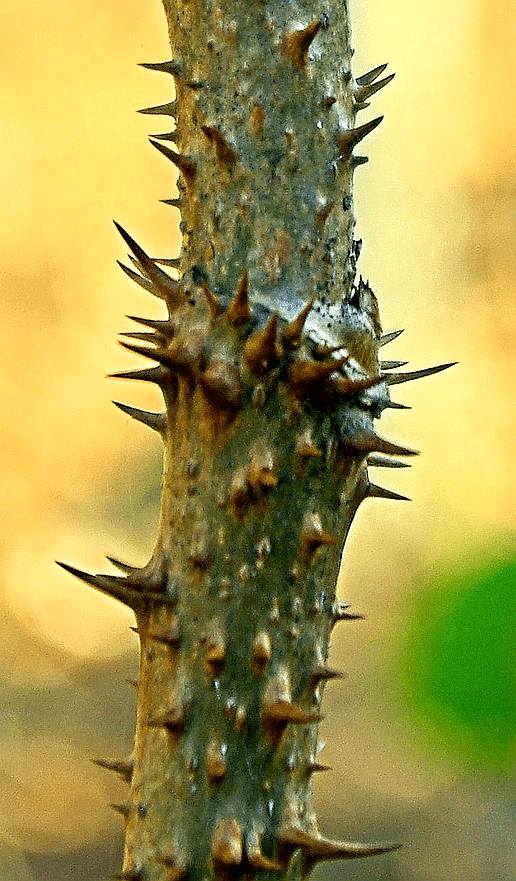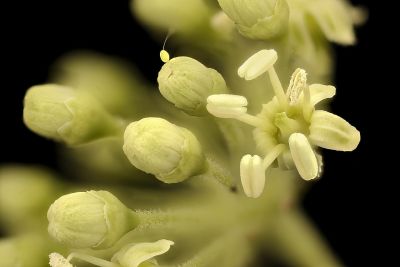 Years ago, while walking along a stretch of University of Virginia woods, I spotted what looked like giant rose bushes. Research revealed they were spiny deciduous shrubs (resembling small trees) called Hercules Club or the Devils Walking Stick, Latin name Aralia spinosa.
Years ago, while walking along a stretch of University of Virginia woods, I spotted what looked like giant rose bushes. Research revealed they were spiny deciduous shrubs (resembling small trees) called Hercules Club or the Devils Walking Stick, Latin name Aralia spinosa.
While the stems resemble rose bush stems, the density of the thorns is much greater. To a large degree, the shrubs spread by means of runners (rhizomes). The beautiful leaves are compound, ornate, and quite large. The flowers are creamy-white and are plentiful.
The fruit clusters remind one of elderberry fruit. If its moderate spreading tendency can be tolerated, the shrub is a magnet for butterflies and small birds. Black bears will also eat the fruit. Deer may browse the plant and use it as a place to rub their antlers.
It’s the Devils Walking Stick
It was not a coincidence I first saw the Hercules Club growing along the edge of a forest, as they grow in partial shade to full sun. Full shade produces a general decline. In the winter, the spiny stems are most clearly visible, lending credence to the name. One visualizes the devil trudging along with his spiny stick. Only he would choose such an implement.
Applications or Uses

In addition to growing the shrub for aesthetic purposes or as food for wildlife, the Devils Walking Stick is useful in land reclamation. It is also satisfactory as a barrier plant. Historically, Native Americans have utilized Hercules Club but the plant can produce harmful physiological effects in the hands of the uninformed.
Enjoy this video showing birds voraciously eating the berries…
Note: You might also enjoy Devil’s Dice – What Are They?
Note: You might also enjoy Devil’s Dice – What are They?
References:
- Fine Gardening: Devil’s Walking Stick
- Virginia Tech: Devil’s Walking Stick
- USDA Publications: Aralia spinosa L., by Kristina Connor

Very interesting. I have never seen one of these.
Jackie, I only wish I had enough land on which I could grow (via nature trails) every interesting plant I come across!
Sounds like a useful hedging plant!
One of the finest of all hedging plants is the Osage orange.
We don’t have any of that where I live. That’s a very interesting name it has – you can see how it would be called that!